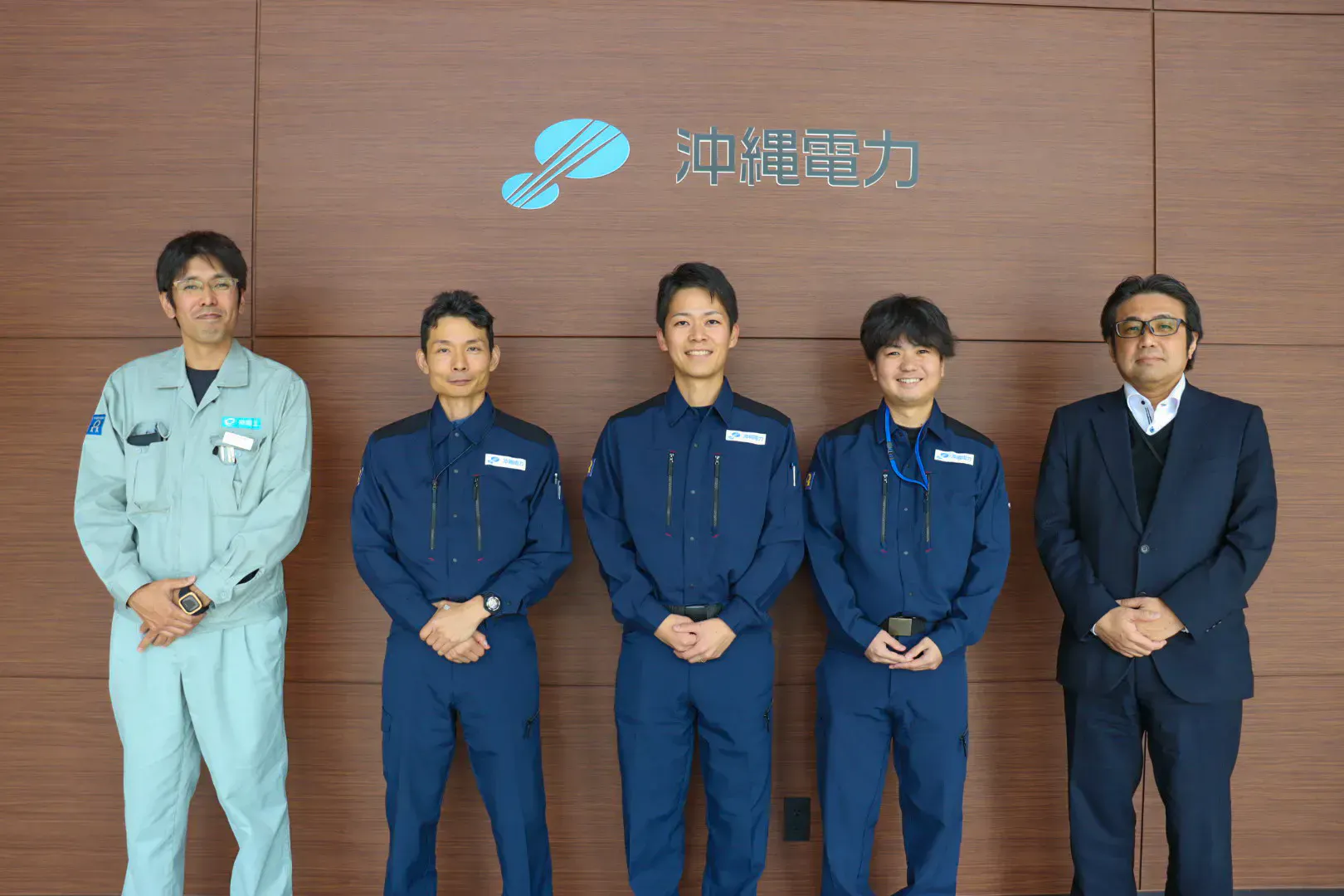Seki Pharmaceutical Co., Ltd.
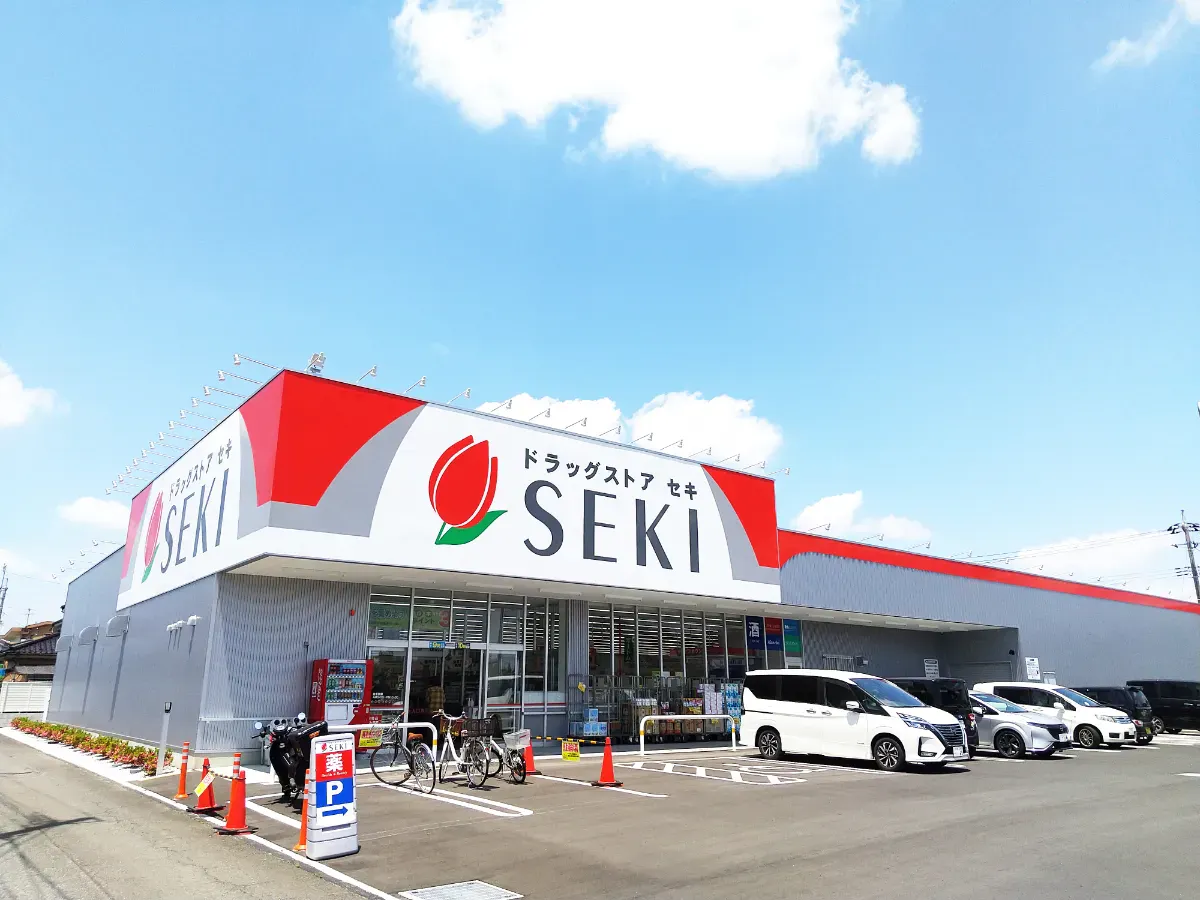

Nama Perusahaan
Seki Pharmaceutical Co., Ltd.
Jumlah Karyawan
5,351
Bidang Usaha
Operation of drugstores and pharmacies
Layanan Pemanfaatan
With a “community-based” concept, Seki Pharmaceutical Co., Ltd. operates nearly 300 drugstores and pharmacies across five prefectures in Japan, as of June 2024. To improve operational efficiency in store development and management, Seki Pharmaceutical has adopted the project management DX(digital transformation) tool KANNA.
We spoke with Mr. Ishii, who oversees store development, and Mr. Misawa, who handles store management, to learn more about the challenges that led Seki Pharmaceutical to implement KANNA, how they are utilizing the tool, and the changes they've experienced as a result.
Latar Belakang dan Efek Implementasi KANNA
課題
1) Both the company and its partners had a large number of stakeholders involved in information sharing, leading to missed critical information when using email CCs for communication.
2) With frequent updates to the overall progress and drawing data, it was difficult to immediately identify the latest version when sharing via email attachments.
導入の決め手
To digitize the progress tracking of store opening and closing plans, as well as the sharing of documents for each store, to eliminate missed information and misalignment in understanding among internal teams and partner companies
効果・改善
1) The progress of store development is consolidated into the project calendar within KANNA, communications for each task are handled via chat, and document sharing is centralized in each project's folder. This allows for seamless, real-time information sharing without any extra effort each time an update is made.
2) The "sub projects" function, which organizes projects into hierarchical levels, has improved overall visibility and awareness of necessary information.
3) Updated drawings are uploaded to each project's folder, ensuring that all stakeholders can always access the latest version. This prevents errors caused by misunderstandings or outdated information.
Narasumber
.webp?fm=webp&auto=format&auto=compress&fit=clip)
Mr. Ishii, Deputy Manager, Store Development Department, Pharmacy Division
Mr. Misawa, Manager, Store Management Department
Feeling the Limitations of Managing Progress via Excel Sheets and Email Attachments
— To start, could you tell us more about Seki Pharmaceutical's business?
Mr. Ishii: We operate drugstore and pharmacy businesses across one metropolitan area and four prefectures. As of June 2024, we are running 215 stores under the "Drugstore Seki" brand and 88 stores under the "Seki Pharmacy" brand.
Mr. Misawa: One of our strengths is our dominant strategy. Our concept is to be a "community-based drugstore," aiming to build strong relationships with local customers. For example, we've developed a point system for our regular customers, a service we've been focusing on long before our competitors.
Additionally, we have partnered with local municipalities, primarily in Saitama, to establish agreements for the supply of goods during disasters. This is another characteristic that highlights our commitment to community-based store operations.
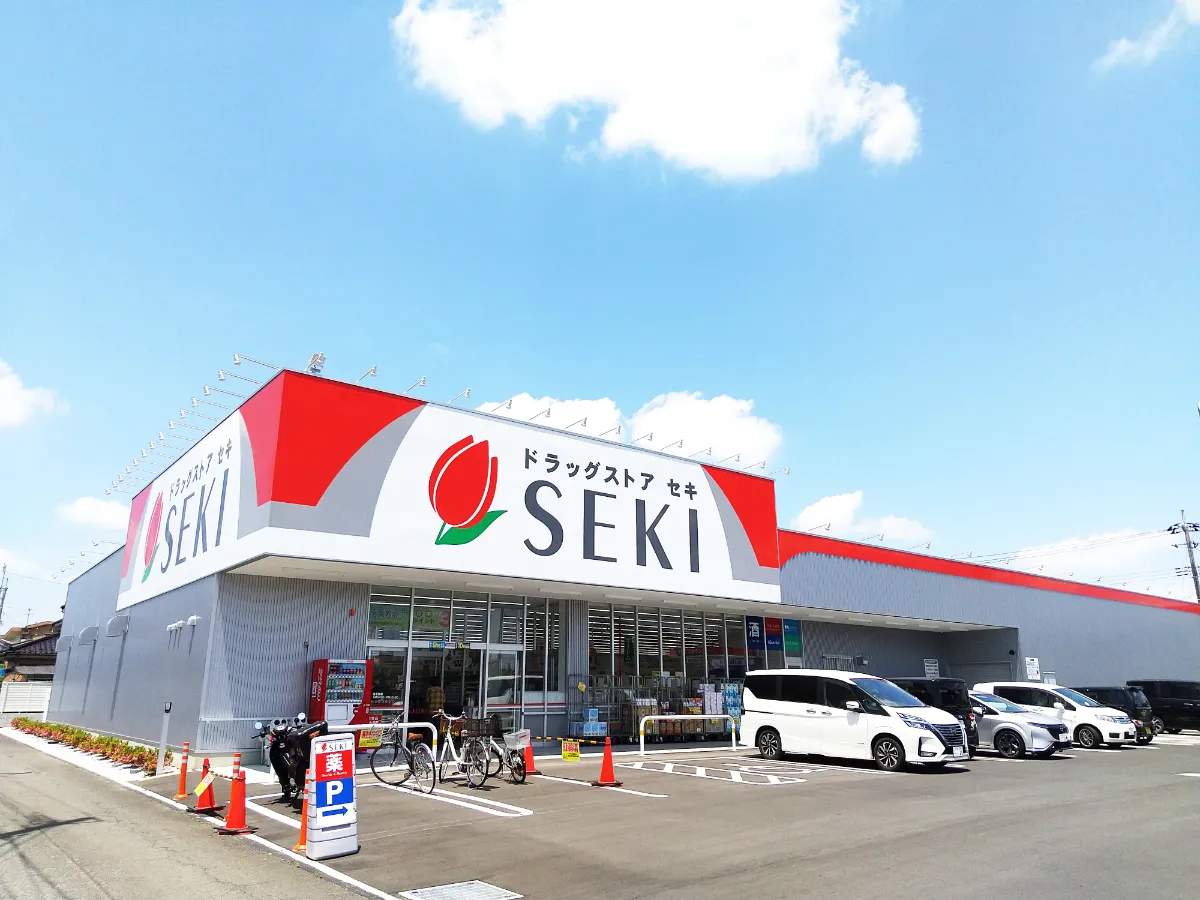
— In which part of the business was KANNA implemented, and what challenges led to this decision?
Mr. Ishii: We implemented KANNA in the Store Development Department, where I work, and the Store Management Department, where Mr. Misawa works. Our department is responsible not only for developing strategies regarding which areas and regions to open new stores and at what scale, but also for coordinating and overseeing the construction work once the decision to open a store has been made.
Mr. Misawa: On the other hand, the Store Management Department steps in after the new store construction is completed by the Development Department. We join the process in earnest once the new store is completed, starting from interior setup. Our work includes coordinating with partner companies and manufacturers who handle construction and equipment, managing applications for handling prescriptions, and even after the store is open, our department continues to handle maintenance, repairs, and renovations related to store operations.
Mr. Ishii: Whether it’s the construction of a new store or post-opening maintenance, repairs, and renovations, we heavily rely on the support of partner companies and manufacturers. However, since we work with such a wide variety of vendors, communication with them has been a significant challenge.
Previously, our main form of communication with these stakeholders was email. For each project, we needed to share information with 10 to 20 people at once, including partner companies, manufacturer representatives, and internal teams within our company. To do this, we used CC in emails to ensure everyone was included, but inevitably, some people would miss important information.
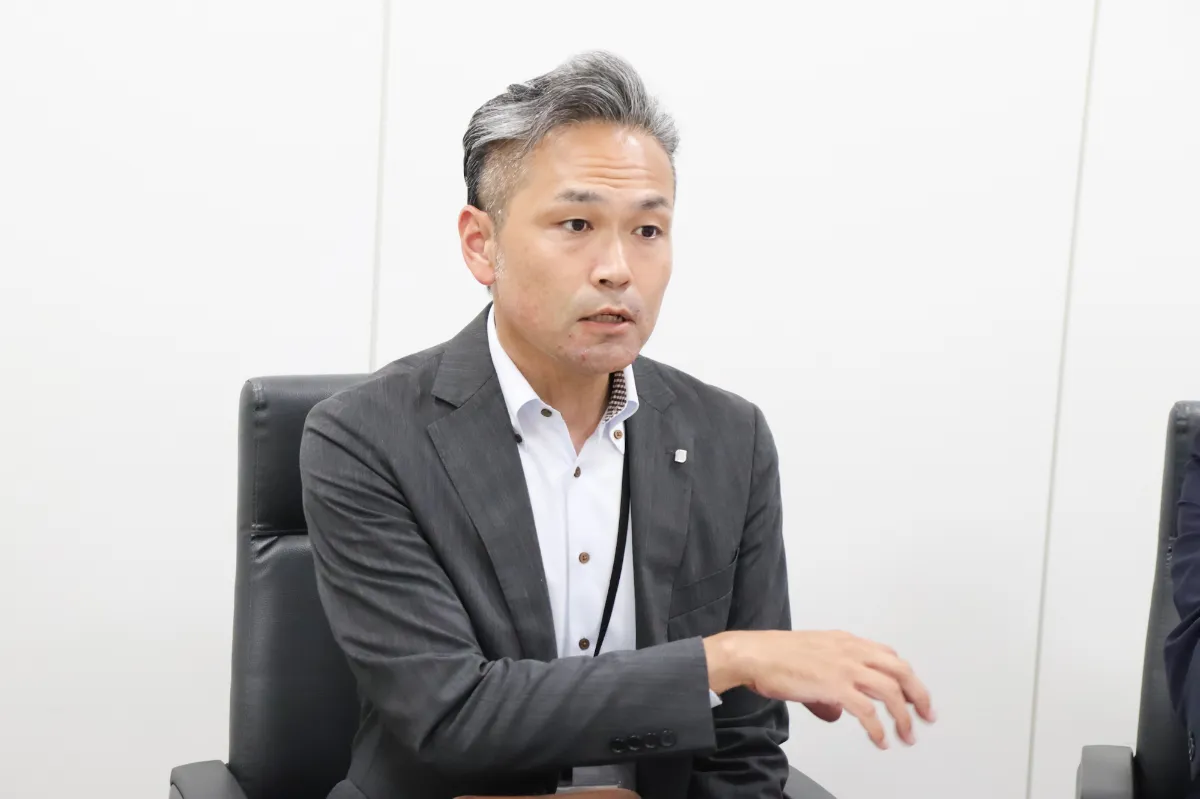
Mr. Ishii: Our work also involves sharing blueprints, which are frequently updated. Sometimes we add instructions, such as "please fix this part," while other times our partner companies make adjustments based on on-site conditions. Each time a change occurred, we would email the updated blueprints to all relevant parties using the method I mentioned earlier.
Mr. Misawa: With so many updates, it became difficult for everyone involved to clearly identify which version of the blueprint was the most up-to-date. If this wasn’t clear, it could easily lead to construction errors or delays. And this complexity in information sharing wasn’t limited to blueprints—progress management faced similar challenges.
Especially during new store openings or renovations, there are a large number of processes involved, and as the workflow progresses, different stakeholders are brought in at various stages. To help everyone understand when their part of the work would begin, we used to create a comprehensive progress management sheet in Excel. We would attach this progress sheet to an email and share it with all stakeholders. However, like with the blueprints, every time there was a change in progress, we had to update the data and resend it.
With email, stakeholders had to download the attachments themselves, so it wasn’t enough just to look at the email. They had to download the blueprints or progress management sheet and manage them on their own, keeping track of the latest versions and updating them as necessary. If even one person failed to manage this properly, it could lead to issues when starting work on-site. However, we had no choice but to leave this management responsibility to each stakeholder, and that was one of the major pain points we faced.

In addition, we really struggled with the creation and updating of the progress management sheets (laughs). At our company, we typically have 2-3 new store openings and renovation projects happening simultaneously each month. On top of that, the Store Management Department also needs to handle maintenance and repairs for both interiors, exteriors, and equipment. It became clear that we needed to leverage a DX (digital translation) tool to streamline our operations, or we would be in trouble.
To be honest, the way we were managing things up until now had reached its limit.
Sub Projects Function That Provides Both an Overview and Clear, Actionable Information
— It seems that using email for communication led to missed information, and sharing the latest data accurately was also a challenge. What led you to choose KANNA to address these issues?
Mr. Ishii: Before we started considering KANNA, we had been looking into another similar tool. However, that tool was specifically focused on construction management, not a DX tool for overall project management like KANNA. What we were really looking for was a solution that allowed for comprehensive information sharing and progress management beyond just construction. So, we went back to the drawing board to search for a new tool, and that’s when KANNA was introduced to us. The first thing that caught our attention was its simple UI.
We wanted to implement a DX tool and improve our current situation as quickly as possible. What we were looking for was speed. However, if a tool requires you to read through a manual just to learn how to use it, that sense of speed would be lost. Nowadays, no one reads a manual to figure out how to use a newly purchased smartphone. You just learn how to use it by actually interacting with it. We felt the same kind of ease and intuitive operation with KANNA, and that was the first major reason we decided to go with it.
We had communication challenges with our partner companies and manufacturers, so if the tool was too complicated, it would be unfair to them. It would be harder to get them on board with the implementation. But for example, KANNA’s chat function feels like the free messaging apps that many of the workers are already familiar with. Sharing documents like blueprints or photos is also easy—every time the latest data is uploaded, a push notification is sent directly to their smartphones. It’s simple and clear, reducing the burden and stress on the workers.
Mr. Misawa: As Ishii mentioned, speed was key for us. What really supported this need for speed was the flexible response of the KANNA team. Once we saw the potential of KANNA’s intuitive interface, we wanted to try it immediately. I was especially eager to move forward (laughs). When they saw my enthusiasm, the KANNA team quickly set up a trial system for us. I’m really grateful for that.
During the trial period, I registered so many projects that it hardly felt like a trial anymore! Managing everything with KANNA became so enjoyable that I started coming up with new ideas on how we could use KANNA in our day-to-day operations. I explored all the possibilities. Honestly, by the end of the trial, it wouldn’t have been surprising if someone said, “This is basically a full-scale implementation already!” (laughs).

During the trial, we invited several partner companies and manufacturers to participate, keeping in mind full-scale implementation. The feature that ultimately convinced us to move forward was the sub projects function. It allows us to create three levels of hierarchy—parent, sub, and sub-sub projects —for each project, with the ability to set viewing restrictions at each level. Moreover, linking the project calendar, which covers the overall progress, to the sub projects function is extremely convenient. Even if there’s a change in the progress, all I need to do is update the project calendar, and a push notification is sent out, enabling all stakeholders to access the most up-to-date information in real time.
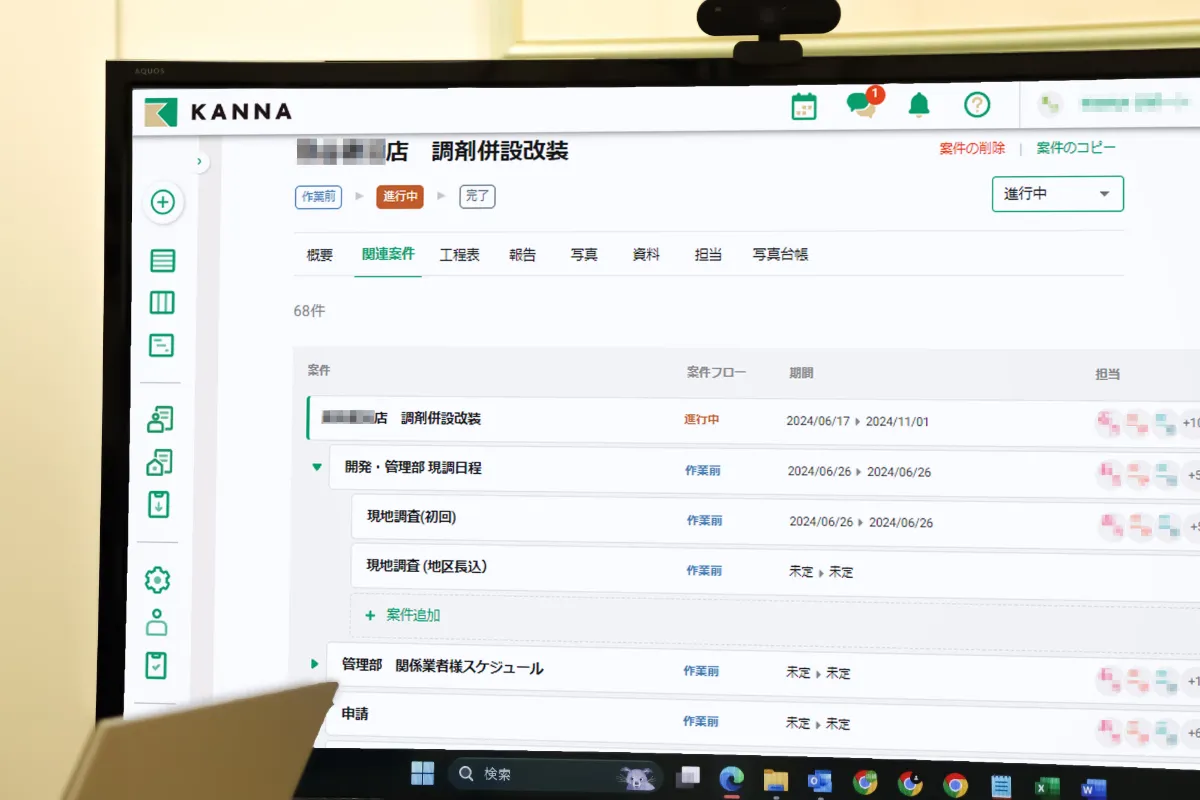
The screen Seki Pharmaceutical uses in KANNA allows projects to be structured into three levels: "parent," "sub," and "sub- sub" projects. Each layer is linked together, and progress is managed at each level.

When updates or chats are made in KANNA, a push notification is sent to all relevant stakeholders. This allows everyone to easily grasp the situation at a glance, without the need for constant follow-up communication.
As I mentioned earlier, many people are involved in new store openings and renovations. It's crucial that all stakeholders are always up to date with the latest information. However, if unnecessary information is constantly shared with everyone, it becomes harder to focus on the tasks that are truly relevant to them.
With KANNA's project calendar and the sub projects function, all stakeholders can stay updated on the overall progress, while the sub projects function allows for more focused information sharing within specific teams. For example, we create a parent project for each store, then create sub projects for each task related to that store. Communication via chat and document sharing through folders is managed within these layers, ensuring that only the relevant people are involved in the necessary discussions.
Eliminating "I Said…, I Didn’t Hear…" type of Issues Through the Combination of Operation Rules and KANNA's Read Receipt Function
— You've been effectively utilizing the sub projects function since the trial phase, but how did your partner companies and manufacturers react to the introduction of this new DX tool?
Mr. Ishii: Since we chose to implement KANNA with ease of use in mind for our partner companies and manufacturers, who could operate it intuitively, we didn’t receive any negative feedback. In fact, some of the manufacturers were already using KANNA, so the transition was smoother than we anticipated. We felt they quickly understood and adapted to the system.
That being said, simply announcing "we’re implementing this" could have caused confusion. From the trial stage, we created documents outlining operational rules both for our company and for our partner companies and manufacturers, and we shared these with everyone. For example, when sharing documents, we didn’t just ask them to upload the files to a folder—we made it a rule that they must also post a message in the chat saying, “This document has been updated,” after uploading.
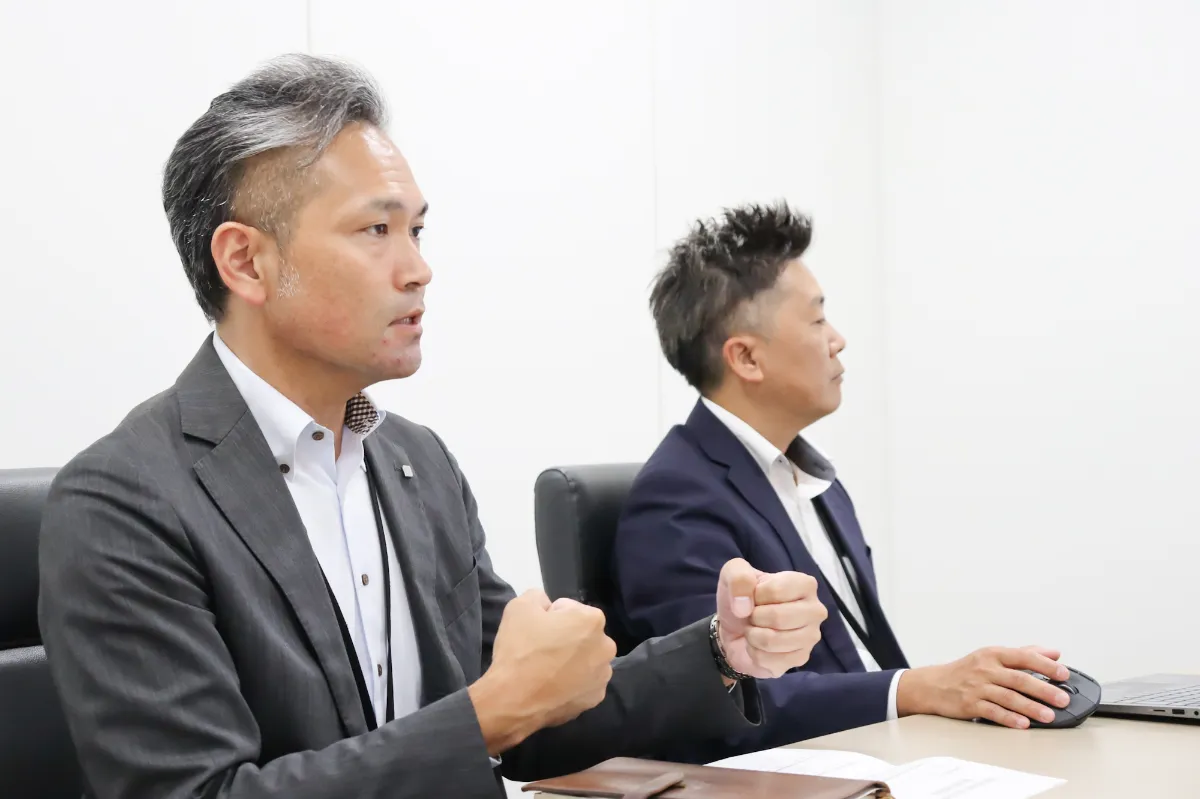
Mr. Misawa: Of course, a push notification is sent each time a document is uploaded, but it’s possible to miss those notifications. However, if the upload is also mentioned in the chat, there’s a record of it. Additionally, KANNA has a read receipt function, so you can see whether someone has read the message or not. This should help eliminate the “I told you” and “No, I didn’t hear” type of issues moving forward.

The chat function in KANNA
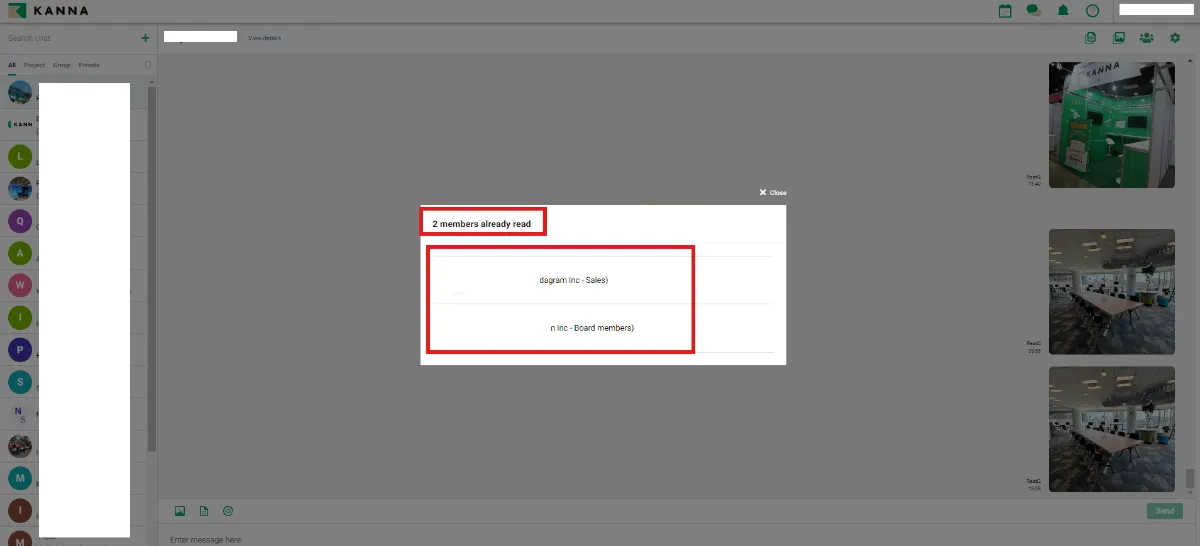
KANNA's chat function allows you to see who has read your messages, helping to avoid issues like "I saw it" or "I didn't see it." This ensures that everyone stays informed and accountable for the information shared.
Being Able to Check Information Anytime, Anywhere Makes it Easier to Plan Future Tasks
— Now that you've started using KANNA, how are you feeling about its effectiveness so far?
Mr. Ishii: After going through the trial, we officially started using KANNA in June 2024. While we're still waiting to see measurable, quantifiable results, there's no doubt that DX tools are incredibly convenient. As well as using it on my PC (web-based) I’ve downloaded KANNA on my smartphone, and tablet, and I really appreciate the ability to check the latest progress or documents anytime, anywhere. The ease of real-time sharing has been a major benefit.
Since we began full-scale use, one of the features I find particularly convenient is the drawing function. By downloading KANNA on a tablet, not only can I review blueprints while out of the office, but I can also add revision instructions directly to the documents. Being able to immediately upload the annotated documents helps prevent situations where a partner company might be making adjustments to the blueprints at the same time, avoiding any overlap or conflicts in updates.
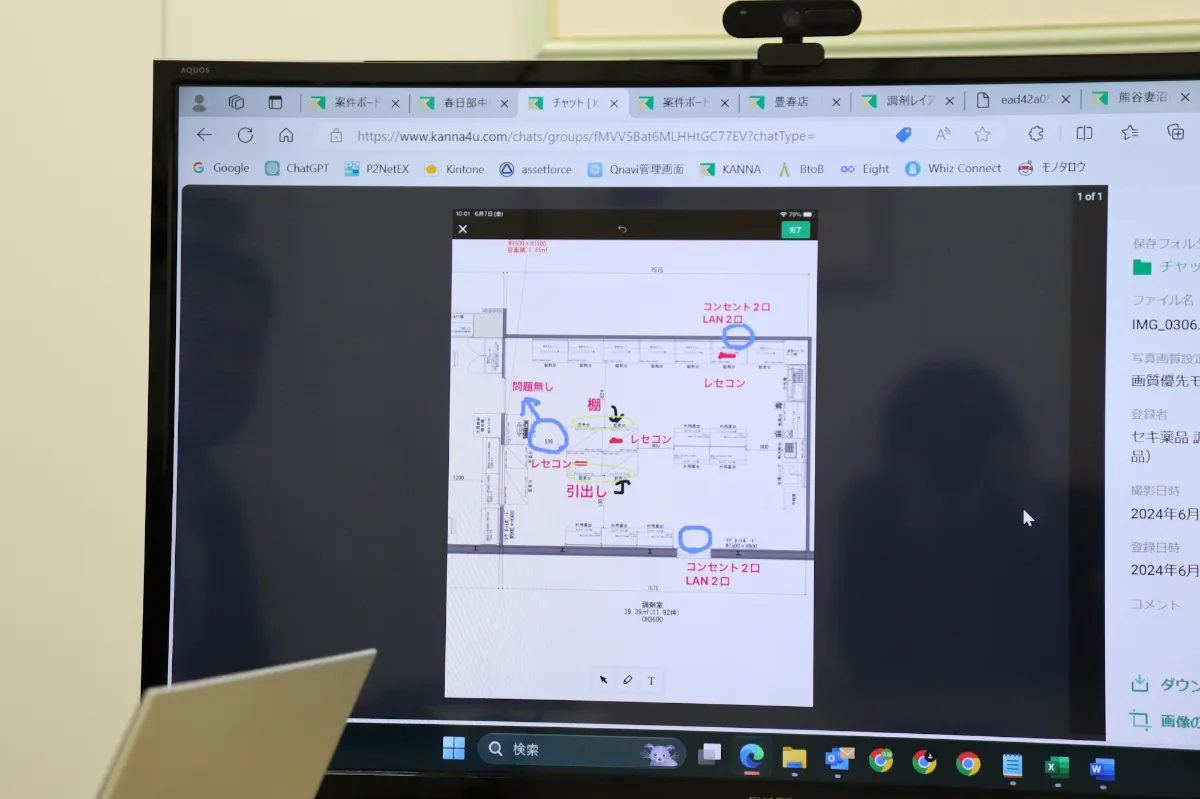
By drawing on the blueprints with revision instructions and uploading them to KANNA, all stakeholders can view the updates in real time. This speeds up work on both the management side and on-site operations, ensuring smoother collaboration and faster progress.
Mr. Misawa: From my perspective, after the full implementation of KANNA, I was finally able to declare, “We will no longer be sending out progress management sheets. From now on, please check all progress updates through KANNA.” Just being able to make this announcement feels like a significant step forward, even though, as Mr. Ishii mentioned, we’re still waiting to fully measure the tangible effects.
Before we implemented KANNA, there was some uncertainty about when Ishii's store development team and my store management team should start collaborating. Even if information was shared before a new store opening was confirmed, my involvement wouldn’t yet be necessary. However, after a new store opening is confirmed, there are tasks that I need to respond to as quickly as possible.
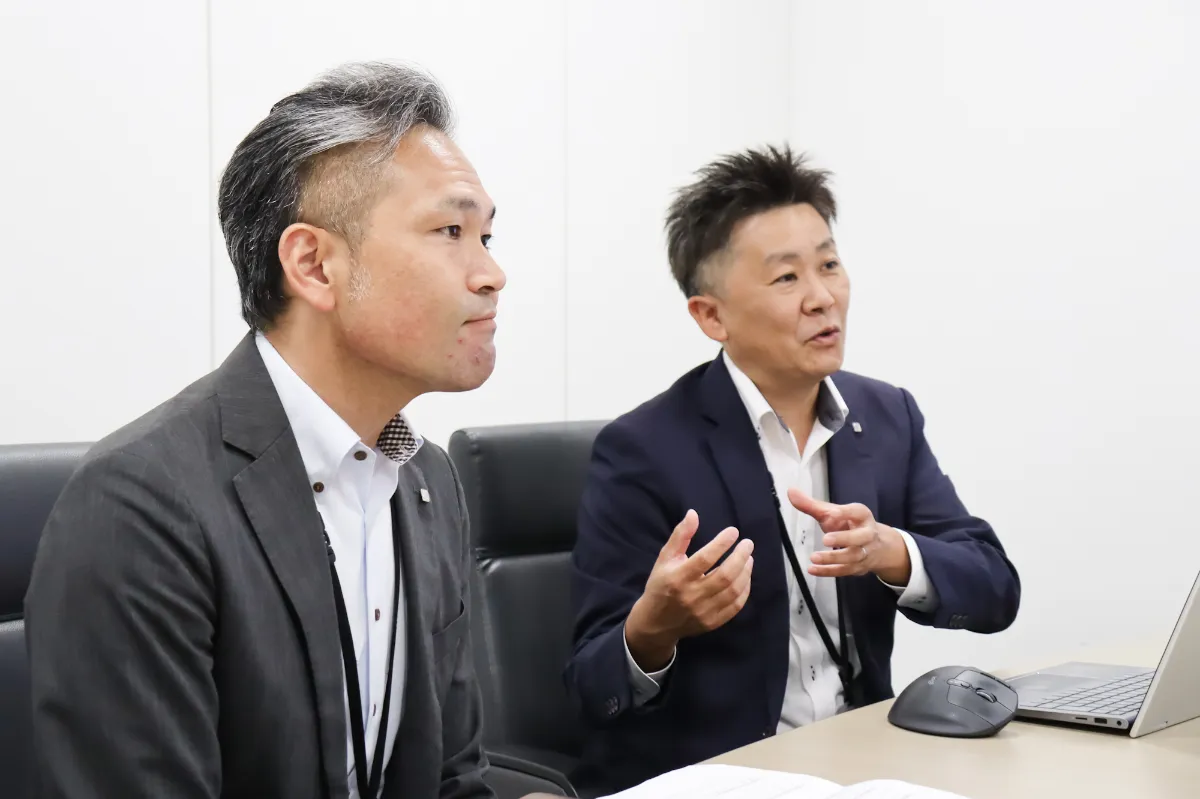
It's common, not just in our company, for plans to change multiple times before a new store opening is confirmed. However, now that we’ve implemented KANNA, even if there’s uncertainty, we can easily create a project and get things moving. Setting up a project is very simple and doesn't require much effort. By establishing a project early on, I no longer need to constantly ask Ishii for updates about potential new openings. Instead, I can already anticipate, "Will this project come up soon?" Having a rough idea of what's ahead gives me a sense of reassurance, allowing me to better prepare. This has been a major shift for us.
— Thank you very much. We look forward to hearing more about the quantifiable effects in the future. With the use of KANNA, how do you see your company evolving going forward?
Mr. Ishii: Whether it's store development or store management, we've historically relied on individual effort and expertise, leading to some degree of reliance on specific people for driving operations and managing information. However, the strength of DX tools like KANNA is that they allow everyone to access the latest information and monitor progress in real time, regardless of where they are. By leveraging this strength, we can not only improve the efficiency of our current operations but also streamline handovers and enhance the accuracy and precision of our work.
The DX initiatives, exemplified by the implementation of KANNA, are not limited to the Store Development and Store Management departments, but are something we plan to expand company-wide. Our president is also supportive and understands the importance of improving operational efficiency through DX. Our goal is to make the successful use of KANNA a model case, which we can then roll out across the company to further drive efficiency in all areas. We are committed to continuing to push forward with streamlining our operations in the future.
.webp)
Company Name: Seki Pharmaceutical Co., Ltd.
Business Description: Operation of drugstores and pharmacies
Date of Establishment: January 1984
Number of Employees: Total number of employees (as of the end of April 2024): 5,351
Website: https://www.sekiyakuhin.co.jp/
Tanggal Publikasi: September 15, 2025


